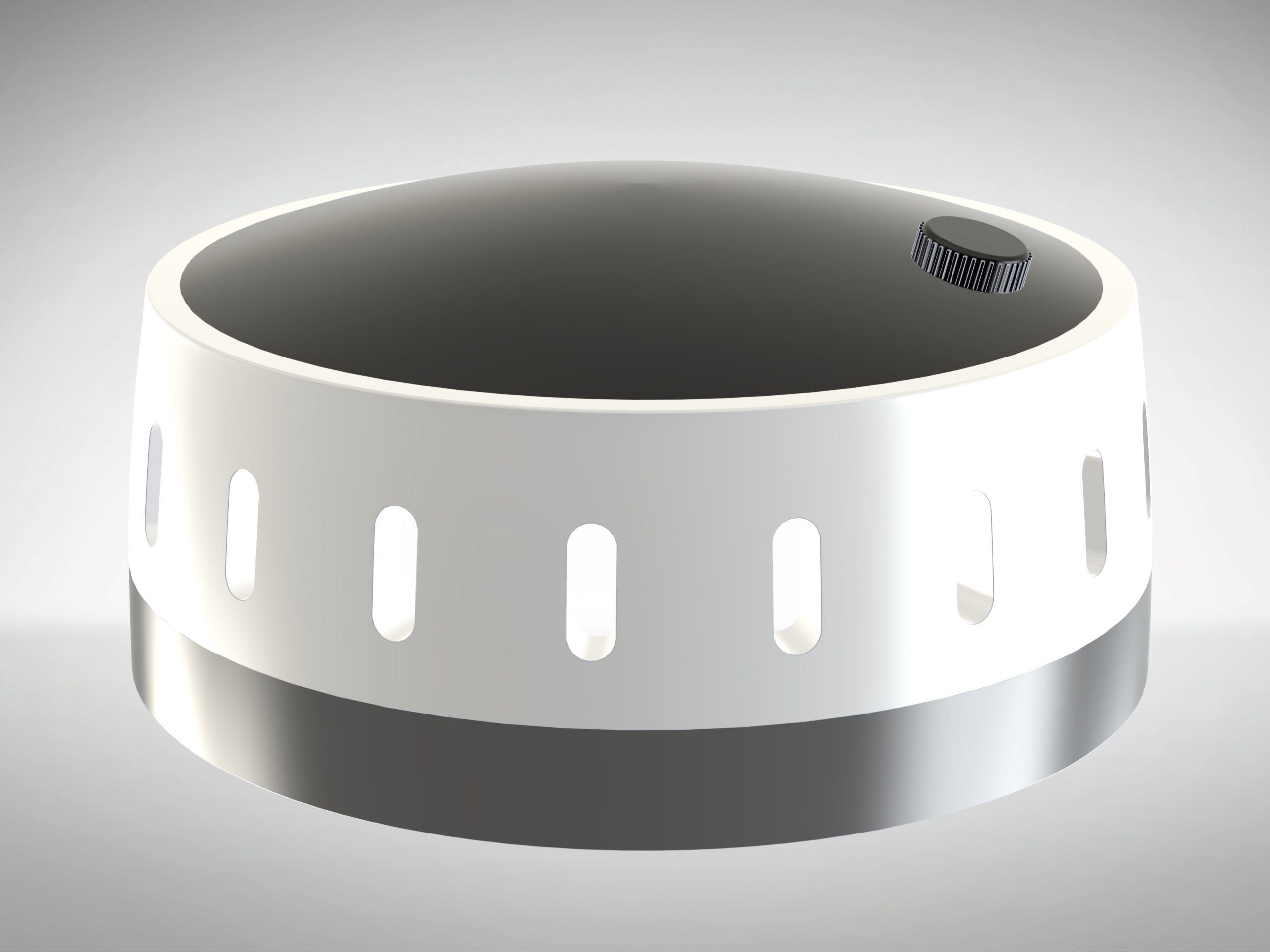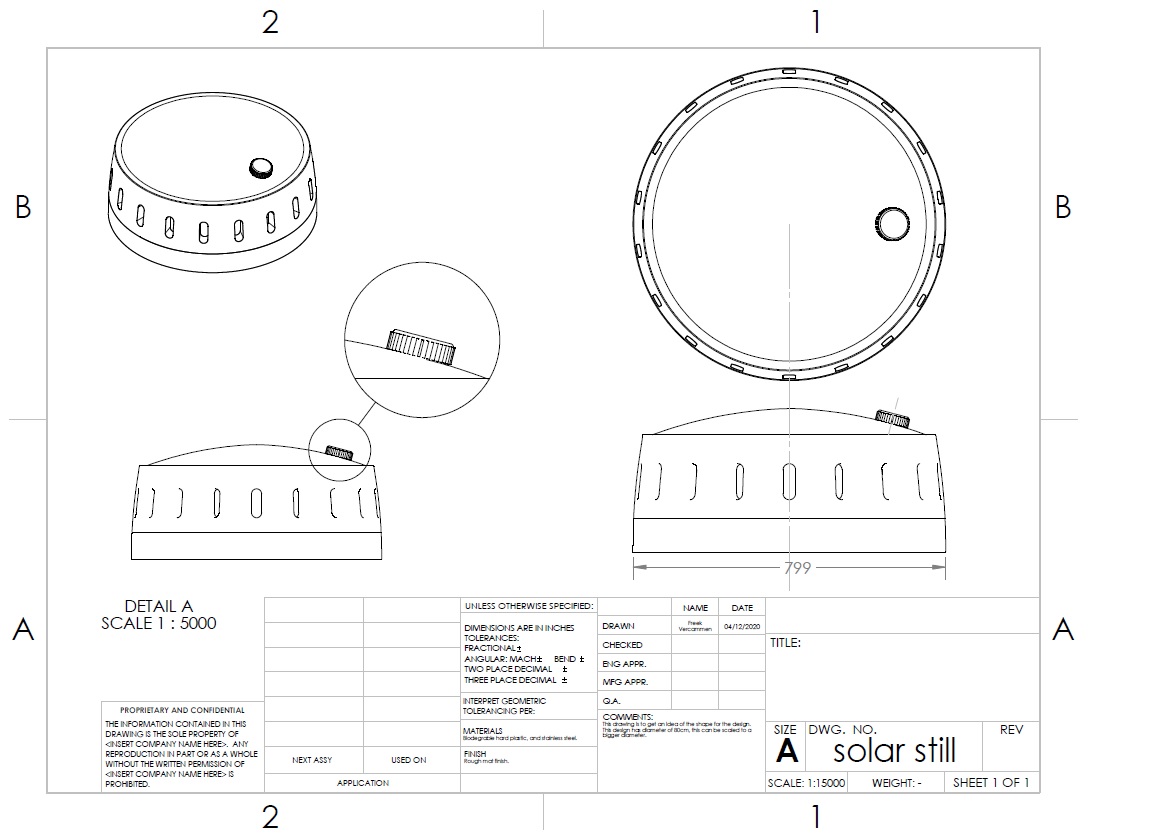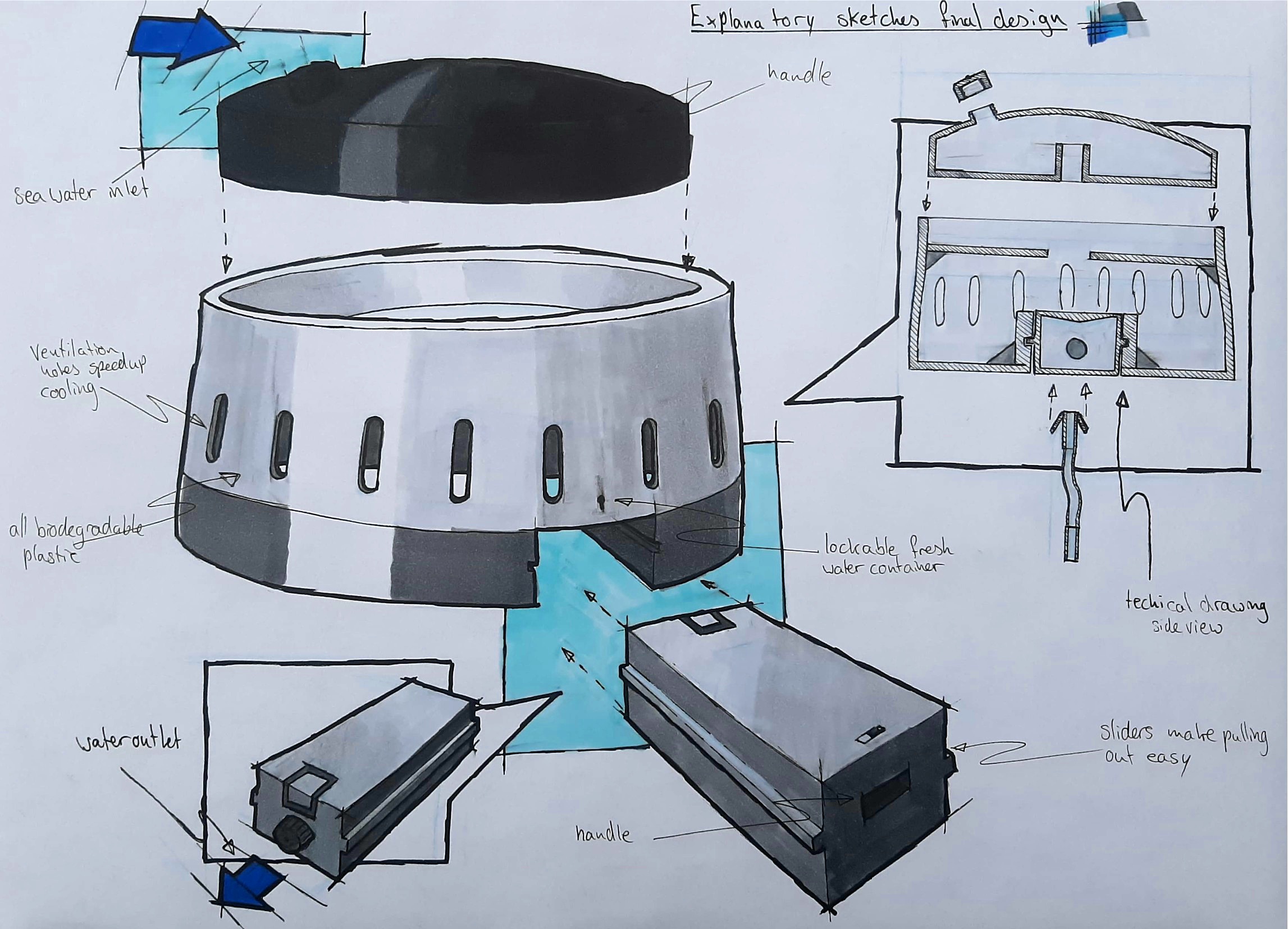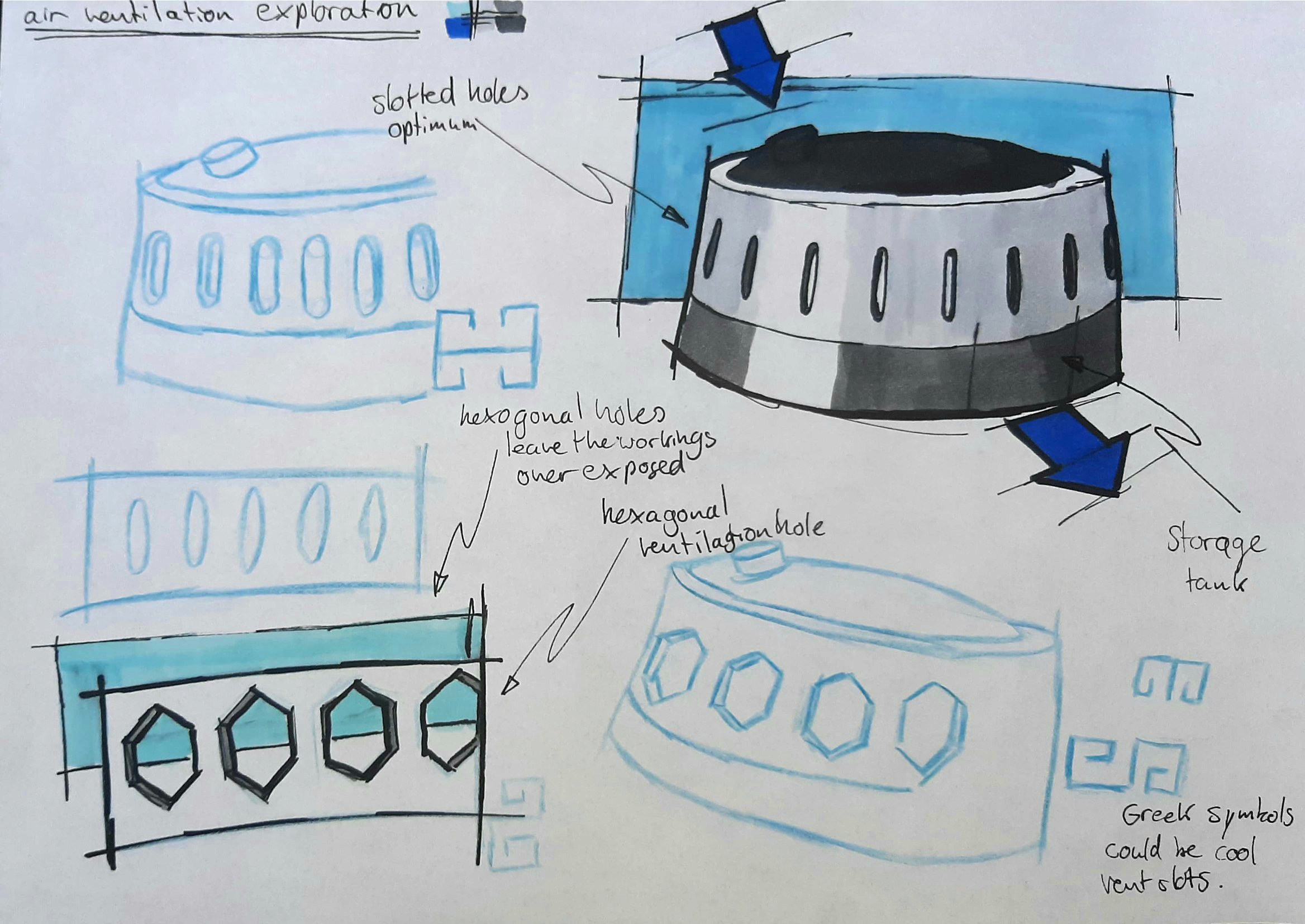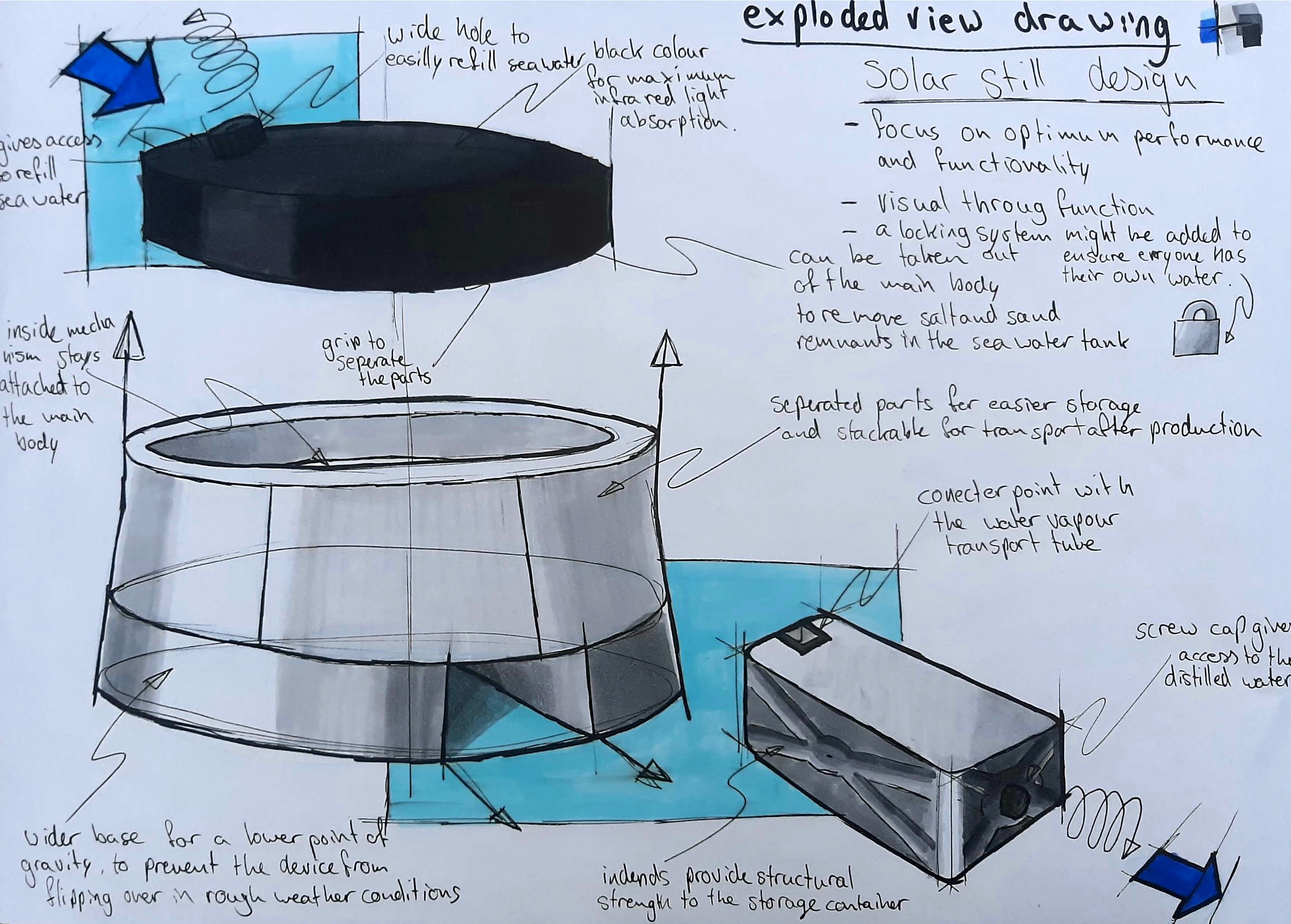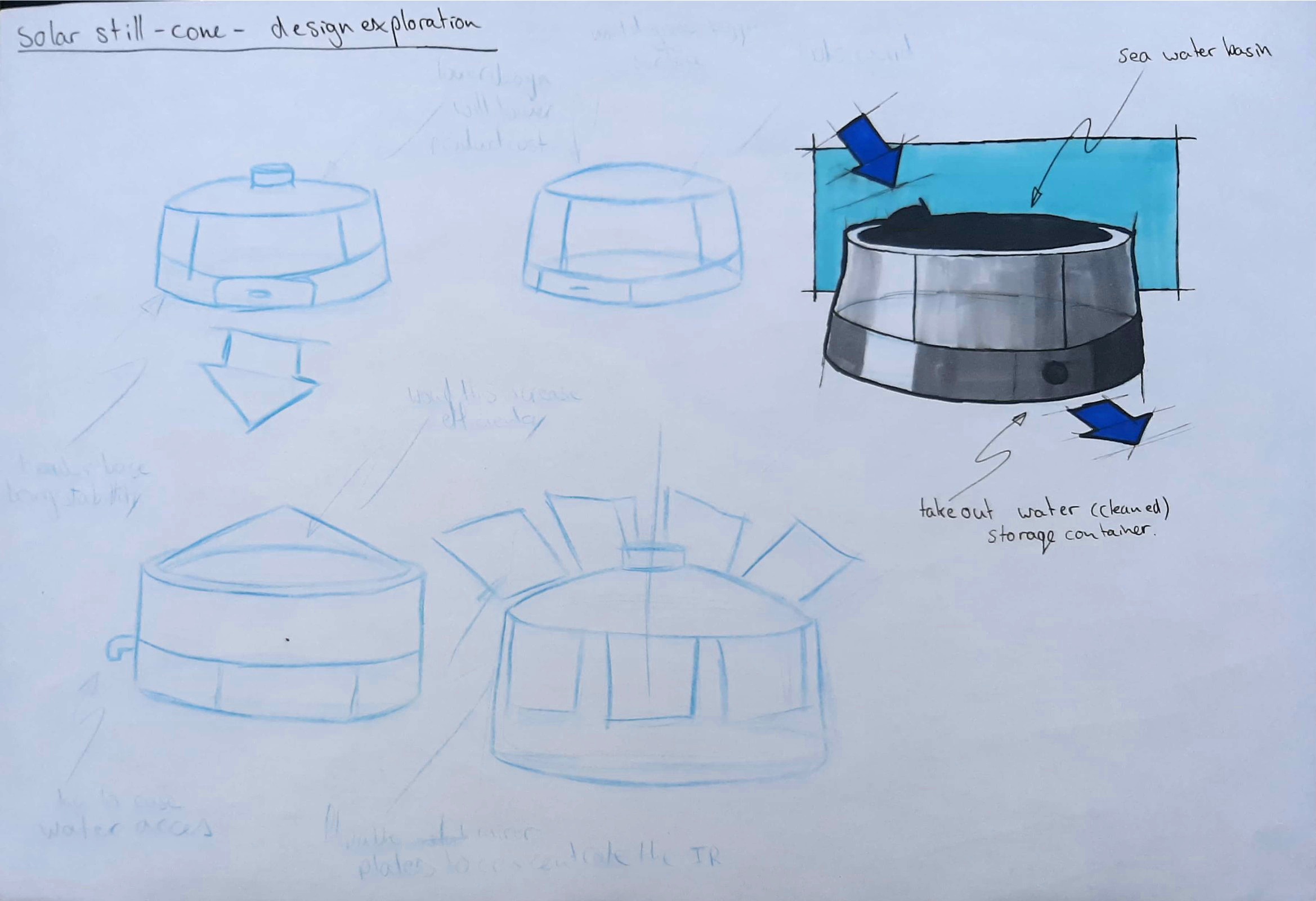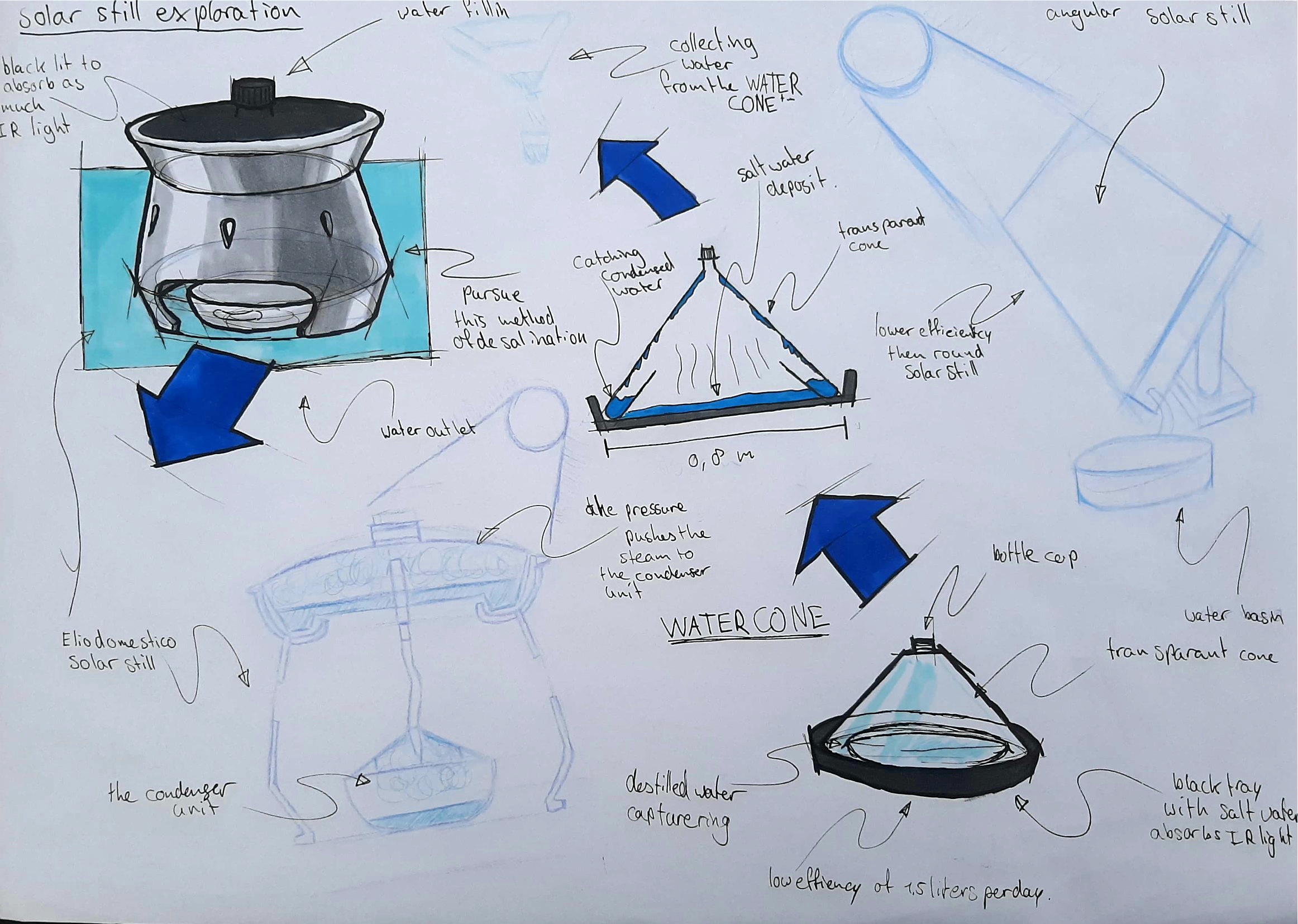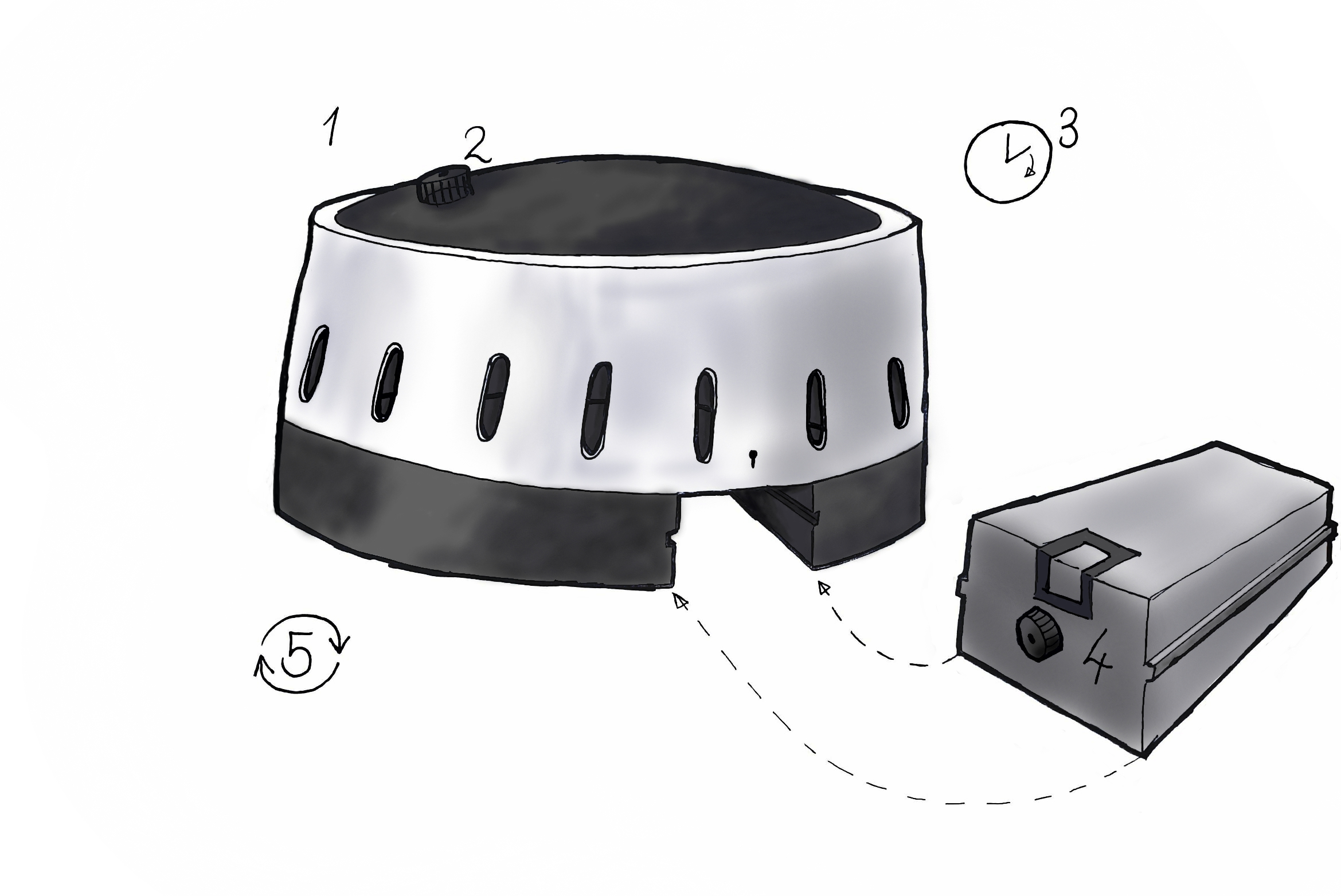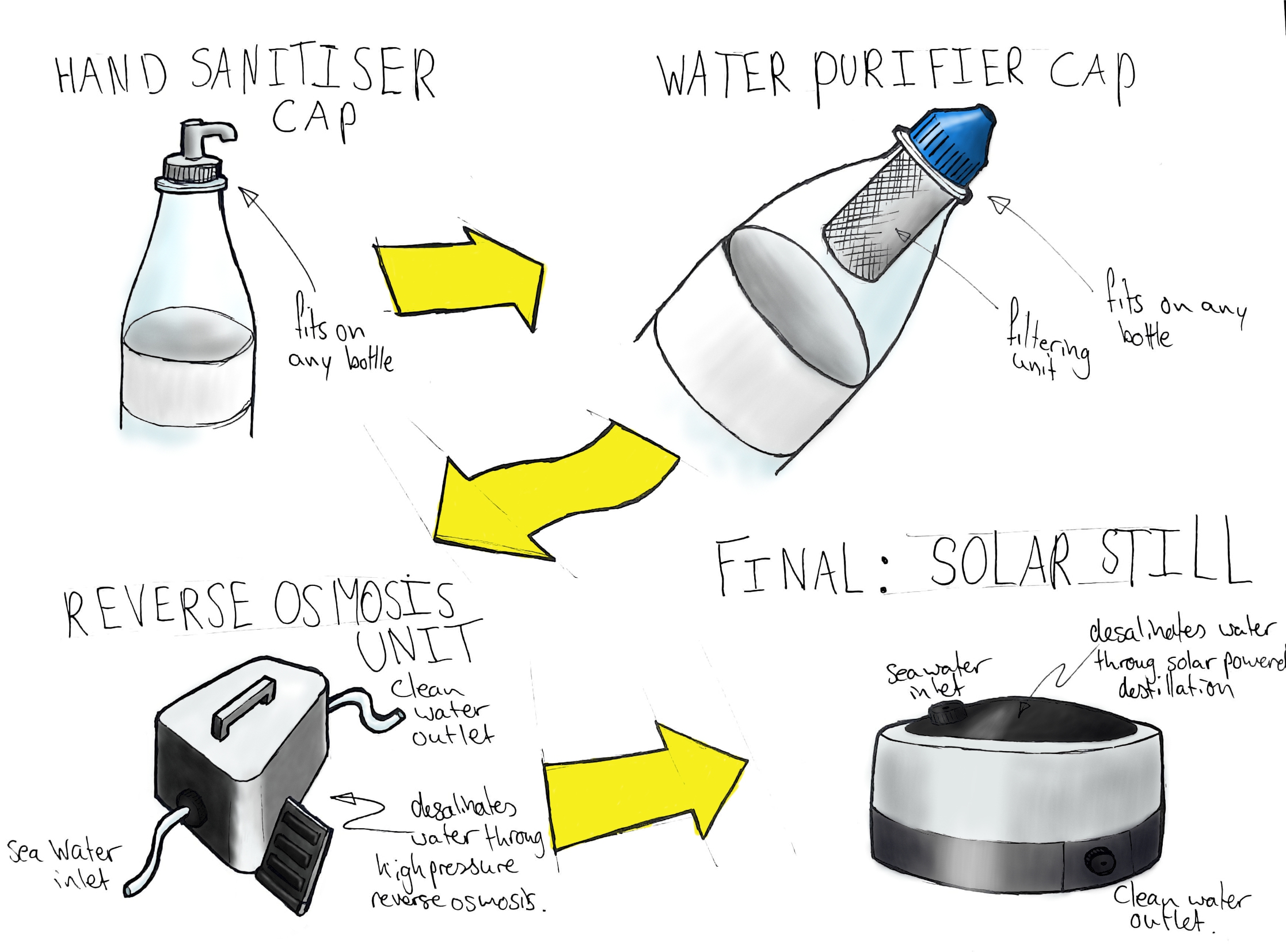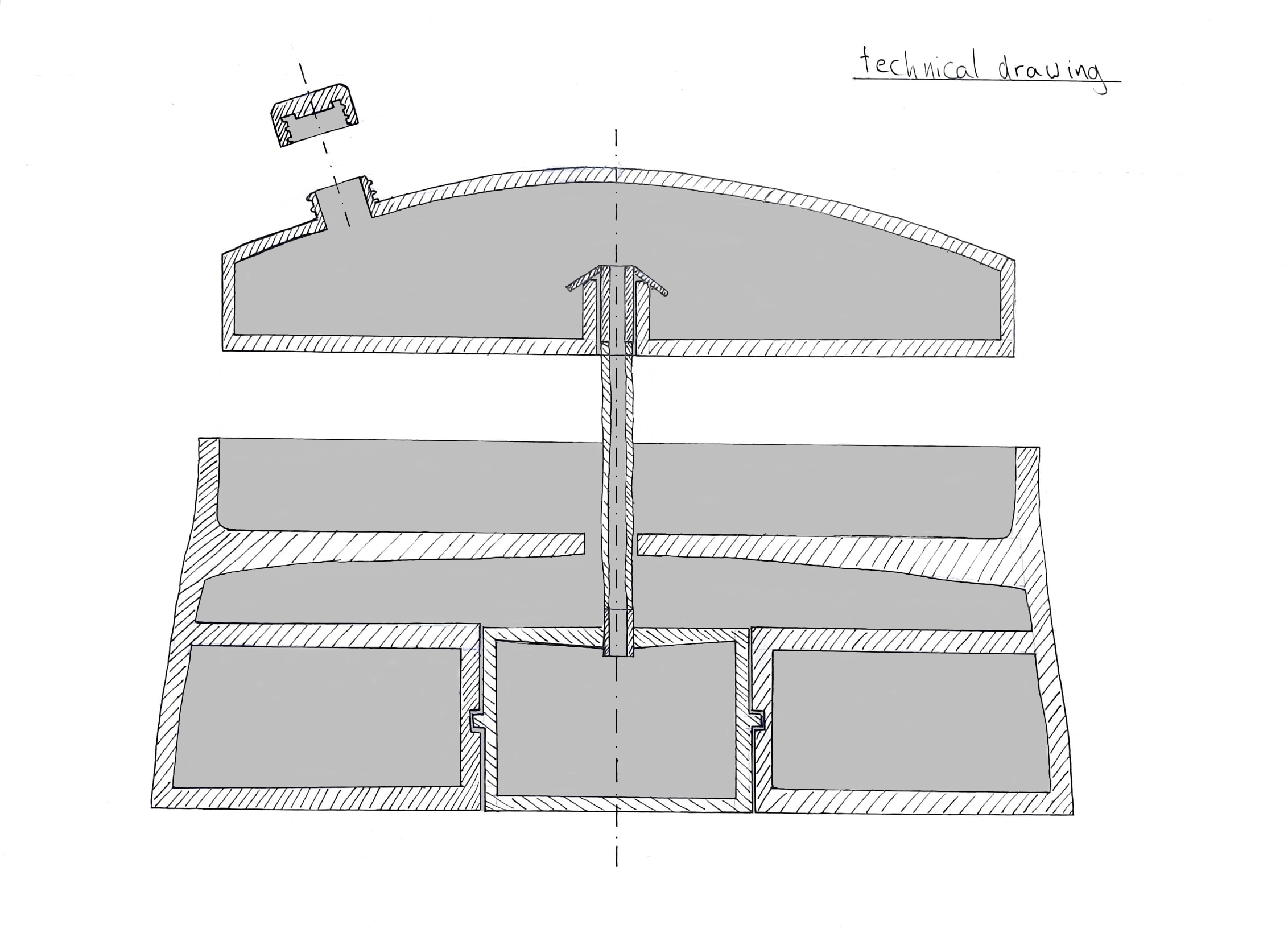During the project Kick Off in the DesignLab at the University of Twente, we learned about this semester's topic: “A Design Challenge in times of COVID-19”. On this day we decided upon to design some sort of sustainable equipment for hygiene and protection. We formulated our initial goal as designing something sustainable that reduces COVID-19 on a large scale.
Our Journey
Our Journey
This pages shows our journey to understand the process we took allong the way on arriving to our current solution, a solar still.
After choosing our first topic, we created a two minute video in which we explained our challenge, objective and stakeholders. In our video we framed our challenge as follows: “We believe the challenge is to design a sustainable solution to prevent the transmission of COVID-19 on a local and global scale.” During this phase of the project we also decided to use the three dimensional framework of sustainability.
In this part of the Design Challenge we made a poster with a guiding synthesis. During this process we decided to narrow down our stakeholder group to refugees in refugee camps in Greece. We chose the refugee camps in Greece, because the living conditions there are inhumane. There are many rules and regulations for refugee camps in Europe. However, the situation in Greek camps is just as bad as in the Global South in times of COVID-19, since there is no way to protect the refugees from this pandemic. The complex situation relatively close to home really sounded like a problem that should be solved.
In this phase of the Design Challenge we explored our stakeholders, the refugees living in Greek camps. We looked into the daily life of our stakeholders, their backgrounds and their needs. During this phase we also put the different theories, such as the capability approach, technological mediation and design ethics into practice for the first time. This came together in Deliverable A.
After gaining knowledge on the different theories, we translated them into guiding principles for our design. We also started following a design sketching and visualisation course to be able to express our ideas in other ways than written form. Upon that, we made the decision to solely focus on Camp Moria. Another part of this phase was brainstorming possible solutions. This led us to ideas such as hand sanitizers and bottle caps with an integrated filter. During this phase and in the Script, our main focus was on designing something that could actually make an impact on the life of the stakeholders.
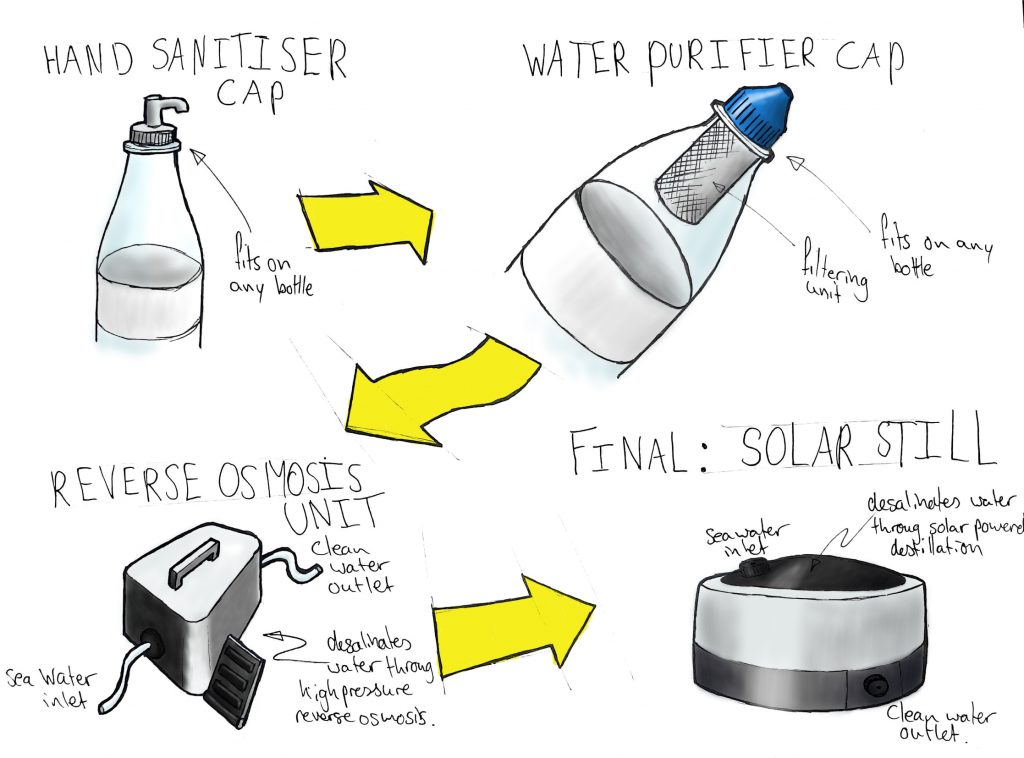
During this phase we brainstormed even more and learned that some solutions, like the hand sanitizers, would not have enough impact, and that the bottle cap was not feasible. During this phase, some of the most important decisions were taken, such as deciding that we wanted something that could reduce queuing in the camp, since this would have a big impact on the daily life of refugees. These decisions led, with some detours, to Solar Still. We handed in an iterated context study - Deliverable B - preliminary sketches of Solar Still and a Storyboard that explains our stakeholders, their context, and Solar Still itself.
During this phase of the project we worked on putting together the last parts for the design of Solar Still in the Context Study and Deepenings . For instance, we chose the materials we would use, and discussed the usage of the product to make this process as easy and safe, and thus appropriate, as possible. This was also the time for us to research the costs and impact of Solar Still in all dimensions of sustainability. Lastly, we made final sketches of the current version of Solar Still
The future of Solar Still at the moment is still unclear. Prototyping and testing is the next suggested step. Our end goal is implementing an improved version of Solar Still, since it has the potential to greatly improve the life of the refugees in Camp Moria.
Design visualisation
The following photos and sketches give an visual overview of our teams journey of exploring the design of Solar Still.
